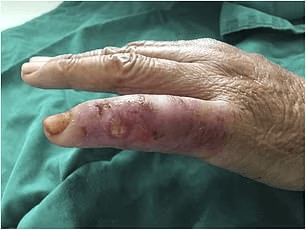Scientists have sounded the alarm over a flesh-eating bacteria which could be present in every US state on the East Coast within the next 20 years.
By the 2040s, annual cases of Vibrio vulnificus could double as a result of warming oceans caused by climate change, according to researchers from the University of East Anglia in the UK.
According to DailyMail, the scientists say climate change allows the bacterium to survive in waters further north than ever, while rising sea levels could push the organism further inland.

The toxic bacteria flourish in warm, salty and shallow water along the coast and respond to the smallest shifts in temperature.
It is currently most common in coastal waters in North Carolina. Infections in humans are uncommon but peak in the summer months.
People contract infections through open cuts or other skin lesions that come into contact with seawater.
An infection can also occur when someone consumes raw or undercooked fish. Infections spread quickly in humans and can seriously damage human flesh.

You cannot be infected by another person.
Symptoms include watery diarrhea, often accompanied by stomach cramping, nausea, vomiting, and fever.
Other signs include chills, skin lesions, and a deadly drop in blood pressure.
Some infections lead to necrotizing fasciitis, a severe infection where the flesh around a wound dies.
Around one in five people with the infection die, sometimes within a day or two of becoming ill. Others may require intensive care or limb amputations.
People usually die from the infection when it enters the bloodstream and causes sepsis.












